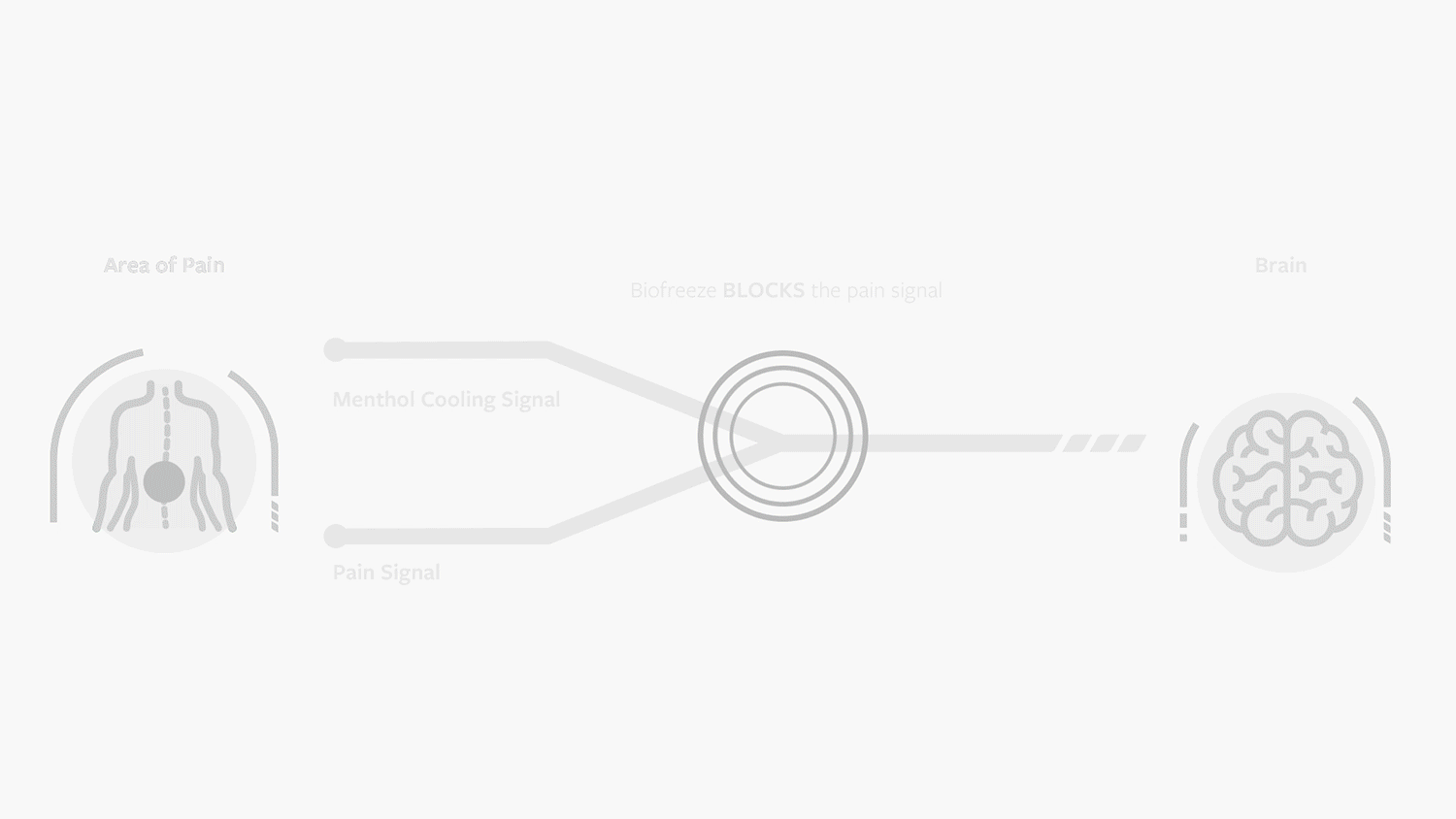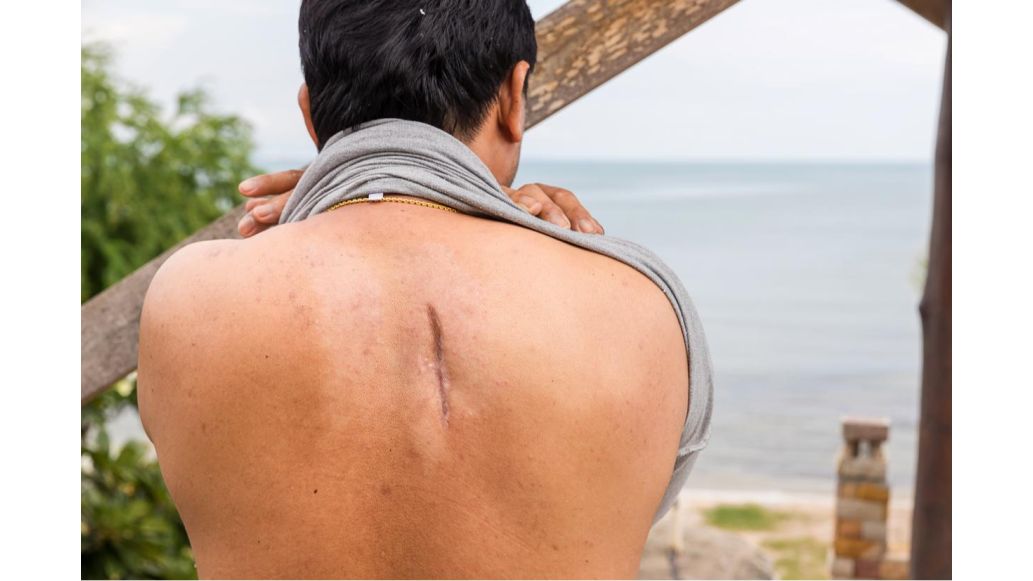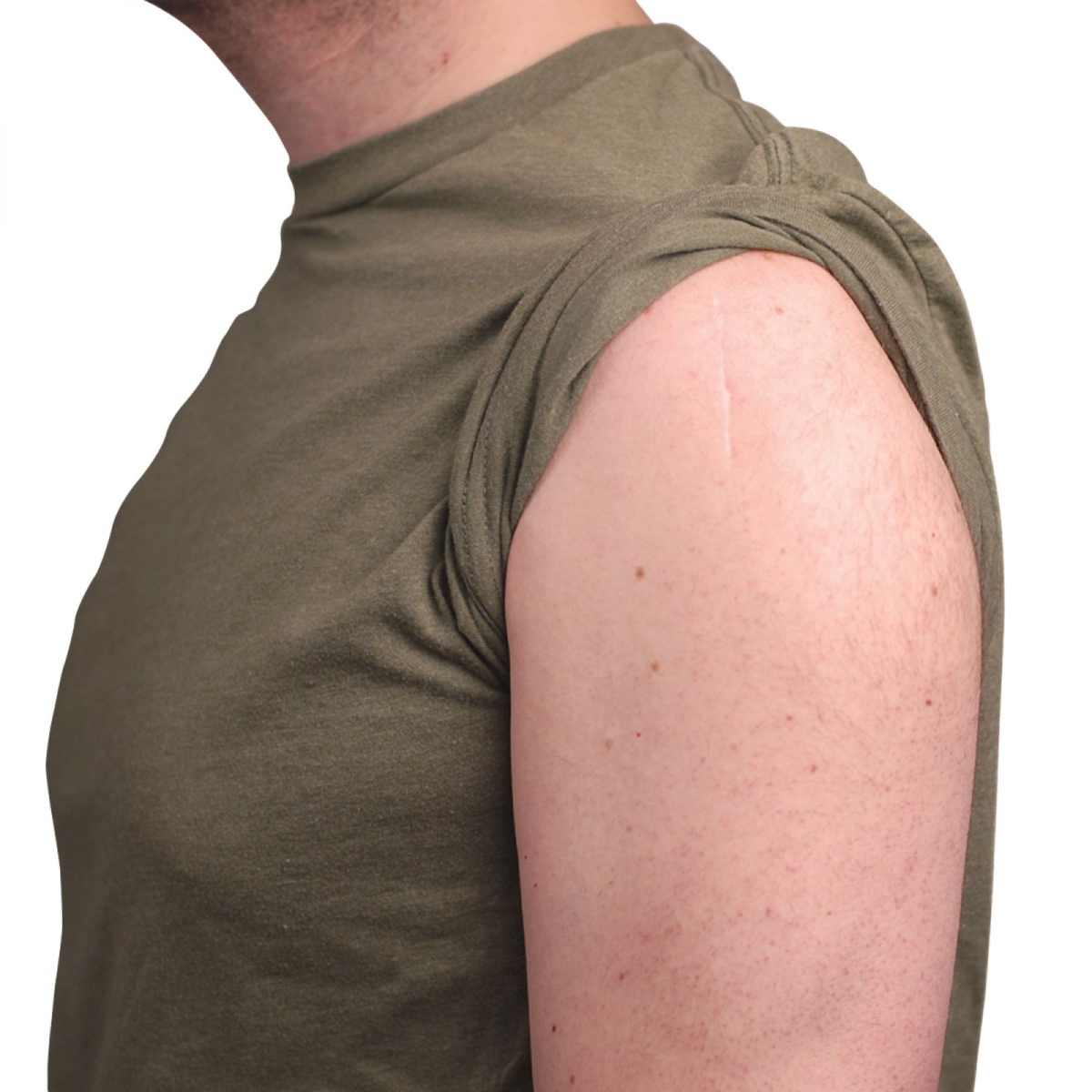What is Scar Tissue?
Scar tissue is created after the top layer of skin—the dermis—is damaged.1 The body produces collagen fibers that help repair the damaged area of the dermis. This collagen is thicker than regular skin and typically has a lighter or darker color than the surrounding skin. Scar tissue also comes in a variety of different types.2
Types of Scars
- Fine-Line Scars
- Occur over cuts, often incision points from surgery
- Look like a raised line with a different color than the surrounding skin
- Usually don’t hurt but sometimes feel itchy in the months after they’ve formed
- Keloid Scars
- Formed when too much collagen grows at the site of an injury
- Even once the wound is healed, scar tissue keeps growing.
- Keloid Scars look red or purple at first and slowly become more pale over time
- Can feel irritated or painful and may restrict movement if near a joint
- Hypertrophic Scars
- Similar to Keloid Scars
- The result of less collagen production and don’t extend beyond the size of the original scar
- Hypertrophic Scars grow for months after the injury but flatten over time
- They typically start red in color and become paler after a few years
- Pitted Scars
- Appear sunken into the skin and typically occur as a result of acne or chickenpox
- Can also occur after injuries or conditions that cause a loss of underlying fat
- Scar Contractures
- Typically caused by burns and are created by the skin shrinking
- May restrict movement
Scars are a natural part of the healing process and are usually superficial with a few causing mild discomfort, itching, or tightness. After a few months of forming, most scars begin to reduce in size and pale in color, becoming less noticeable. At two years after the initial injury, the scar will likely stop changing and become permanent.
Preventing Scars and Reducing Appearance
Scars are naturally occurring and cannot be prevented entirely. However, there are some ways to help reduce the size and discoloration of the scar.
The most important form of prevention is to take proper care of your wound. Keep your wound clean by washing the initial injury with mild soap. This removes debris and germs which can help prevent infections and promotes a faster healing process.3 While the cut, scrap, or other injury is healing, be sure to change your bandage daily to keep the area clean. A faster and safe recovery is the easiest way to avoid large scars.
Another method for getting ahead of scar tissue buildup is to use a gel or silicone sheet to cover the scar. Both of these seal the scar off from air while hydrating the skin and providing constant pressure. Silicone Gel Sheets are perfect for larger scars while an ointment is great for applying on uneven surfaces of the body. It can also be used to create a less visible treatment on the face. Use both of these methods immediately after the initial wound has healed.
|
|
Direct sunlight is another factor that can impact the appearance of a scar. Newly-formed scar tissue can darken or become more red due to sunlight. Make sure to use sunscreen when outside and reapply often.
Managing Scar Pain and Irritation
Most scars are simply cosmetic, but some scars can cause pain, discomfort, skin tightness, and itching. The quickest way to get clinically-backed pain relief is with Biofreeze. Biofreeze is believed to work based on the “Pain Gate Theory”. This means that, once applied, the cold sensation of Biofreeze is received by the brain instead of the painful sensation signaled by the nerves.

Hydrocortisone cream is safe and easy to apply directly to the scar if you’re feeling more itching and irritation than general pain. Acne and scars caused by acne are often associated with rashes and dry skin.4 Hydrocortisone can help treat these conditions and reduce the itching or irritating sensations. Consult a doctor before applying hydrocortisone to your face or underarms.
The collagen that forms scar tissue is a tough, fibrous protein that may feel harder than the surrounding skin.5 This toughness can also cause the area to feel tight when moving, especially if the scar is near a joint or other flexible, uneven part of the body. After the initial wound is fully healed, you can use a scar tissue massager. The Roylan Roller Scar Tissue Massage Tool can be gently rolled on the scar tissue and surrounding area to break up the dense tissue. Massage the scar three times per day for ten minutes each.
It’s important to remember that scars are a sign of the body’s incredible ability to heal itself and recover successfully from injuries and surgery. The previously mentioned methods may help reduce the appearance of a scar, but scars are natural and almost everyone has at least one. Your scars are normal and marks of the body’s progress.
References
- “Scars: Overview.” American Academy of Dermatology, https://bit.ly/2Za05ay.
- “Scars.” NHS Choices, NHS, 4 Sept. 2017, https://bit.ly/2WYn31L.
- “Proper Wound Care: How to Minimize a Scar.” American Academy of Dermatology, https://bit.ly/2yS71i5.
- “Anti-Itch (Hydrocortisone) Topical : Uses, Side Effects, Interactions, Pictures, Warnings & Dosing.” WebMD, WebMD, https://wb.md/3cC2Ghu.
- “Diagnosing Scars & Keloids.” Patient Care at NYU Langone Health, https://bit.ly/2zGvKFU.
Medical Disclaimer: The information provided on this site, including text, graphics, images and other material, are for informational purposes only and are not intended to substitute for professional medical advice, diagnosis or treatment. Always seek the advice of your physician or other healthcare professional with any questions or concerns you may have regarding your condition.








 France
France Australia
Australia




